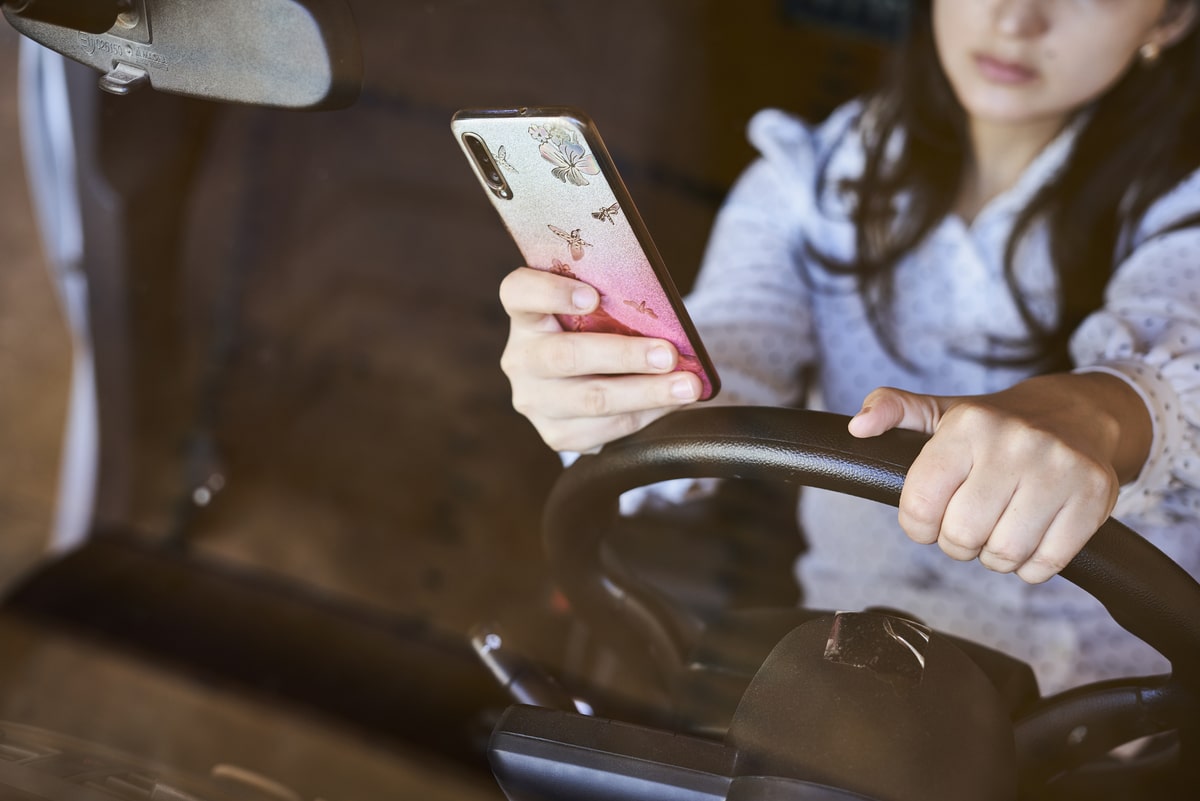Everyone knows it is tough to get a teen to look up from his or her cellphone. But when teens – or anyone – get behind the wheel, it is more than an annoyance; it’s a significant danger. Drivers are required to pay attention and avoid distractions when operating a motor vehicle because distractions while driving cause thousands of deaths every year.

When most people think of distractions while driving, the first thing that comes to mind is texting and driving. But there are a lot of ways to get sidetracked while driving, especially for teens. Here are the three primary types of distracted driving:
- Visual Distractions
Visual driving distractions can be anything that takes your eyes off the road. For example:
- Looking down to find something you dropped in your car
- Looking at your GPS on your phone or a vehicle’s navigation system
- Looking at the car radio to change the station
- Watching other drivers to the point of distraction
- Looking at the tempature controls in your car in order to adjust it
- Looking at your phone to scroll through a playlist
- Reading a book or magazine
- Looking at your phone to email someone or use Google
- Gawking out the window at the scenery passing by
The bottom line: Your eyes should always be on the road ahead of you. If they’re not, then you’re distracted, which puts you, your passengers, and other drivers at risk.
- Manual Distractions
Manual distractions mean anything that causes you to take your hands off the steering wheel while you’re driving. For example:
- Trying to eat a burger and fries while driving
- Drinking
- Smoking
- Reaching for something in the backseat, passenger seat, or on the floor
- Changing the radio station, putting in a CD, or hooking up your phone for streaming music
- Opening your glove compartment
- Trying to fold or unfold a map
- Handing toys or a drink to a child in the backseat
When your hands aren’t on the wheel, you are not in full control of your car. Anything that takes your attention away is a hazard.
- Cognitive Distractions
Cognitive distraction is basically daydreaming. When you’re cognitively distracted, you are not mentally paying attention to the road, and that can lead to an accident. Cognitive distractions can be:
- Daydreaming
- Talking on the phone
- Chatting with your passengers
- Thinking about work or school
- Worrying about an upcoming doctors appointment
- Making a mental grocery list
- Getting carried away by your emotions over an incident
- Planning out future events
- Thinking about absolutely anything other than the road in front of you
Letting your mind wander happens to everyone. The road can get boring, so it makes sense that you are looking for something to mentally stimulate you. But it is critical that your focus is on the road. Your full attention is needed to avoid potential accidents.
Texting and Driving
Texting and driving is the worst because it encompasses all three types of distractions. A recent study on teens driving and texting showed:
- 94% of teens know that texting and driving is dangerous.
- 35% of teens do it anyway despite knowing how dangerous it is.
- 11 teens are killed in car accidents every day because of texting and driving.
- 1 in 4 car accidents is caused by drivers who are distracted by texting.
- 16- to 24-year-old drivers use their cell phones most often while driving (more than any other age group).
The best way to avoid an accident and traffic tickets? Don’t text and drive.
Yes, sometimes accidents can’t be avoided. But avoiding distractions while driving is the top is one of the best ways to stay safe behind the wheel and avoid accidents. While getting a driver’s license is a milestone in any teen’s life, it is important to remember that driving is a privilege. Don’t text and drive and cut down on distractions while driving.
Contact Huffman & Huffman Brothers-in-Law today if you’ve been involved in an accident caused by a distracted driver. We have proudly helped tens of thousands of people since 1973, and we can help you, too.
 Text Us
Text Us  Call Us
Call Us 







